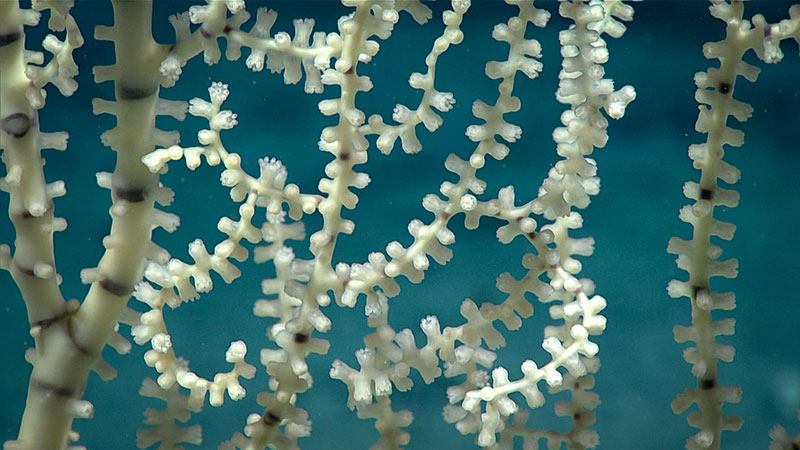Are corals animals, plants, or something else?
Corals are animals.

Bamboo corals like this one spotted during Dive 04 of the 2019 Southeastern U.S. Deep-sea Exploration are colonial, which means that each polyp is a separate animal. Each polyp has eight tentacles, which is characteristic of an octocoral. Image courtesy of NOAA Office of Ocean Exploration and Research, 2019 Southeastern U.S. Deep-sea Exploration. Download image (jpg, 99 KB).
Because corals are attached, taking root to the seafloor, people often think they are plants. Because many corals have hardened surfaces, they are sometimes mistaken as being rocks. However, unlike plants, corals do not make their own food using photosynthesis. And, unlike rocks, corals are very much alive. Corals are, in fact, animals. They are invertebrates (animals lacking a backbone) belonging to the phylum Cnidaria, class Anthozoa.
What we often call “a coral” is actually made up of hundreds or thousands of individual animals called polyps. The polyp uses calcium carbonate (limestone) from seawater to build a hard, cup-shaped skeleton. This skeleton protects the soft, delicate body of the polyp.
Each polyp has a stomach that opens at one end, which is surrounded by tentacles. The tentacles capture food by stinging it, similar to a jellyfish. Some corals use algae to get food; the coral gets food from the algae and the algae use the coral. This is called a “symbiotic” relationship.